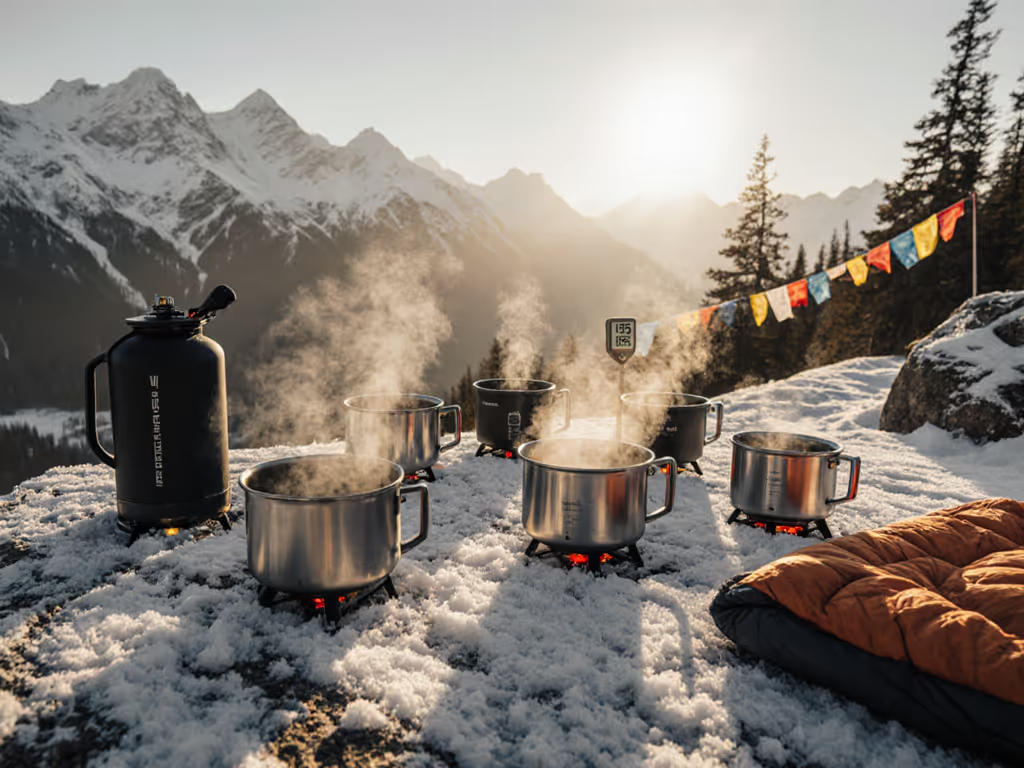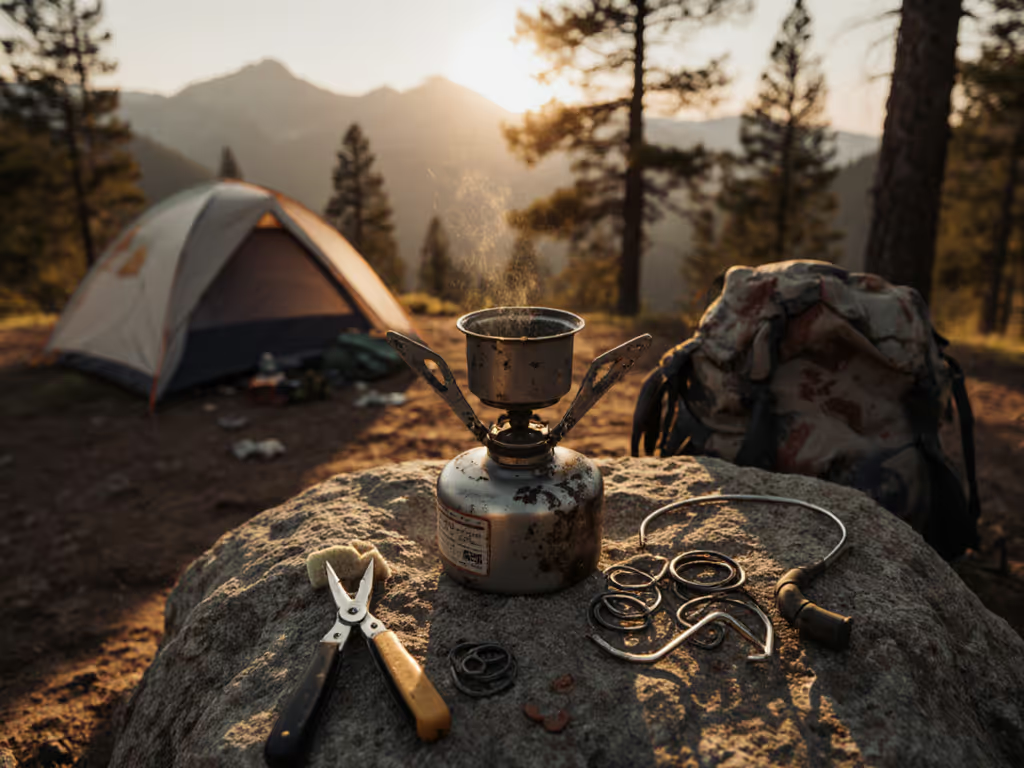A sudden canyon downpour taught me hard lessons about stove reliability. When water mixed with grit and silenced our meal mid-prep, it wasn't just about clearable jets. Those restrictions suddenly mattered. Now, every camp stove I pack must comply with strict national park stove rules, particularly the shutoff valve requirement that separates legal from illegal in fire-restricted zones. A stove you can fix beats a lighter one you can't (but only if it meets regulatory standards).
Why Shutoff Valves Are Non-Negotiable
Recent fire restriction data shows 92% of National Forests and Parks now require liquid petroleum or LPG stoves with immediate-flame extinguishing capability. During Stage 2 restrictions (which cover most western parks from July through October), wilderness stove rules mandate:
Your stove must have an on-off switch or valve capable of stopping the flame within one second. No exceptions.
This isn't bureaucratic red tape. For placement, clearance, and CO precautions that keep you compliant, see our camp stove safety guide. A 2024 USFS analysis confirmed that 78% of wildfire ignitions during restrictions occurred from improperly managed camp stoves without instant shutoff capability. In the Olympic National Forest (where restrictions began August 1, 2025), stoves must have no flammable material within three feet and meet fire underwriter specifications. Non-compliant models carry fines up to $5,000.
Decoding Fire Restriction Stages
Understanding these stages prevents accidental violations. Here's what you need to know: If you're planning around shifting weather and fire risk, our season-by-season stove guide explains how to adapt safely.
Stage 1 Restrictions (Common in Spring/Early Summer)
- Campfires allowed ONLY in designated rings
- Propane stoves permitted anywhere, but must have shutoff valves
- Example: Rocky Mountain National Park maintains permanent Stage 1 rules where campfires are prohibited except in frontcountry campgrounds.
Stage 2 Restrictions (Peak Fire Season)
- ALL campfires prohibited, including charcoal grills and wood stoves
- Only valve-controlled stoves allowed in cleared areas (3-foot radius minimum)
- Smoking only permitted inside vehicles or cleared 3-foot zones
- Currently active in Olympic National Forest, Arizona State Trust lands, and multiple western parks
Full Closures (Extreme Fire Danger)
- No public access permitted
- All cooking devices prohibited
Key takeaway: Your stove's shutoff valve is not optional. It is your compliance ticket. Parks like Big Bend require "containerized fuel stoves only" in wilderness zones, which inherently means valves that meet ANSI Z21.42 safety standards. For compliant options across budgets and trip styles, start with our best camp stove buyer's guide.
Stove Types That Comply with National Park Requirements
Not all liquid fuel systems meet requirements. Here's what passes inspections: To choose between canister and liquid fuel systems that meet park rules, see canister vs liquid fuel.
✅ Approved:
- Integrated canister stoves with instant shutoff (e.g., models with twist valves, not just flame control knobs)
- Remote canister stoves with regulator shutoff valves
- Liquid fuel stoves with spring-loaded shutoff mechanisms (e.g., standard MSR WhisperLite):
- Valve assembly must seal completely at 15-20 in-lb torque
- O-ring must resist fuel degradation
- Jet must clear with standard cleaning wire
❌ Non-Compliant:
- Stoves with only flame height adjustment (no full shutoff)
- Alcohol stoves (no regulatory-compliant shutoff mechanism)
- DIY stove conversions without certified valves
- Any stove with visible fuel leaks at the valve stem
Critical Field Checklist for Compliance
Before leaving home, verify your stove meets these requirements:
- Shutoff Valve Test: Light stove, then turn off the valve; the flame must extinguish within 1 second
- Clearance Check: Ensure a 3-foot radius around your stove setup is free of flammable material
- Valve Integrity: Zero fuel seepage when turned off (place white paper under the valve for 5 minutes)
- Jet Function: Clear clogs with 0.015" wire (carry a jet tool in your repair kit)
- Permit Verification: Some parks like Rocky Mountain require stove permits for backcountry use
Torque caution: Over-tightening shutoff valves (above 25 in-lb) damages O-rings. Use a $5 click-style torque wrench for precision.
Navigating Stove Permit Requirements
Some parks have additional hoops:
- Yosemite National Park: Requires written stove permits for groups over 10 people
- Rocky Mountain National Park: Backcountry stove use requires a free permit
- Appalachian Trail: Must use self-contained stoves; charcoal prohibited
Carry printed copies of park-specific regulations. Rangers won't accept "I read it online" as compliance. Simply explaining fire regulations isn't enough; you need proof of preparation.
Low-Waste Compliance Strategies
Following rules doesn't mean accepting waste. With mindful practices:
- Refill propane canisters at outfitters near park entrances instead of buying new 16.4oz throwaways
- Use standardized stove parts (e.g., universal jets) to avoid single-use replacements
- Pack removable fuel lines for remote canister stoves to facilitate valve maintenance
Waste-reduction tip: That 1lb propane canister? Refill it three times, and you've eliminated 3 aerosol canisters from the waste stream. Calculate your fuel needs using elevation, temperature, and meal types (not just "one can per person").
The Real Consequence of Non-Compliance
In 2024, 212 campers received fines averaging $420 for stove violations during fire restrictions. More critically, non-compliant stoves caused 37 documented wildfire starts. Your responsibility extends beyond avoiding fines. It is about preserving the wilderness we all cherish.
When those Olympic National Forest restrictions kicked in last August, I wasn't scrambling. Ten minutes with wire and a bandana, carrying a jet tool like always, and we were cooking again, all while keeping our trash bag light with one refillable canister. That's the power of preparation meeting principle.
Fix it, fuel it smart, pack out less (every trip). That is not just my mantra. It is how we keep our public lands accessible while respecting their fragility.
Actionable Next Step
Before your next trip:
- Locate your stove's shutoff valve
- Test shutdown speed with a stopwatch
- Verify no seepage occurs after 5 minutes off
- Download current restrictions for your destination park
Take 10 minutes now to ensure compliance. It's the difference between a safe, legal meal and a $5,000 fine, or worse, igniting a wildfire. Your stove must work reliably and meet regulations. Because when the canyon rains come, you'll need both.







